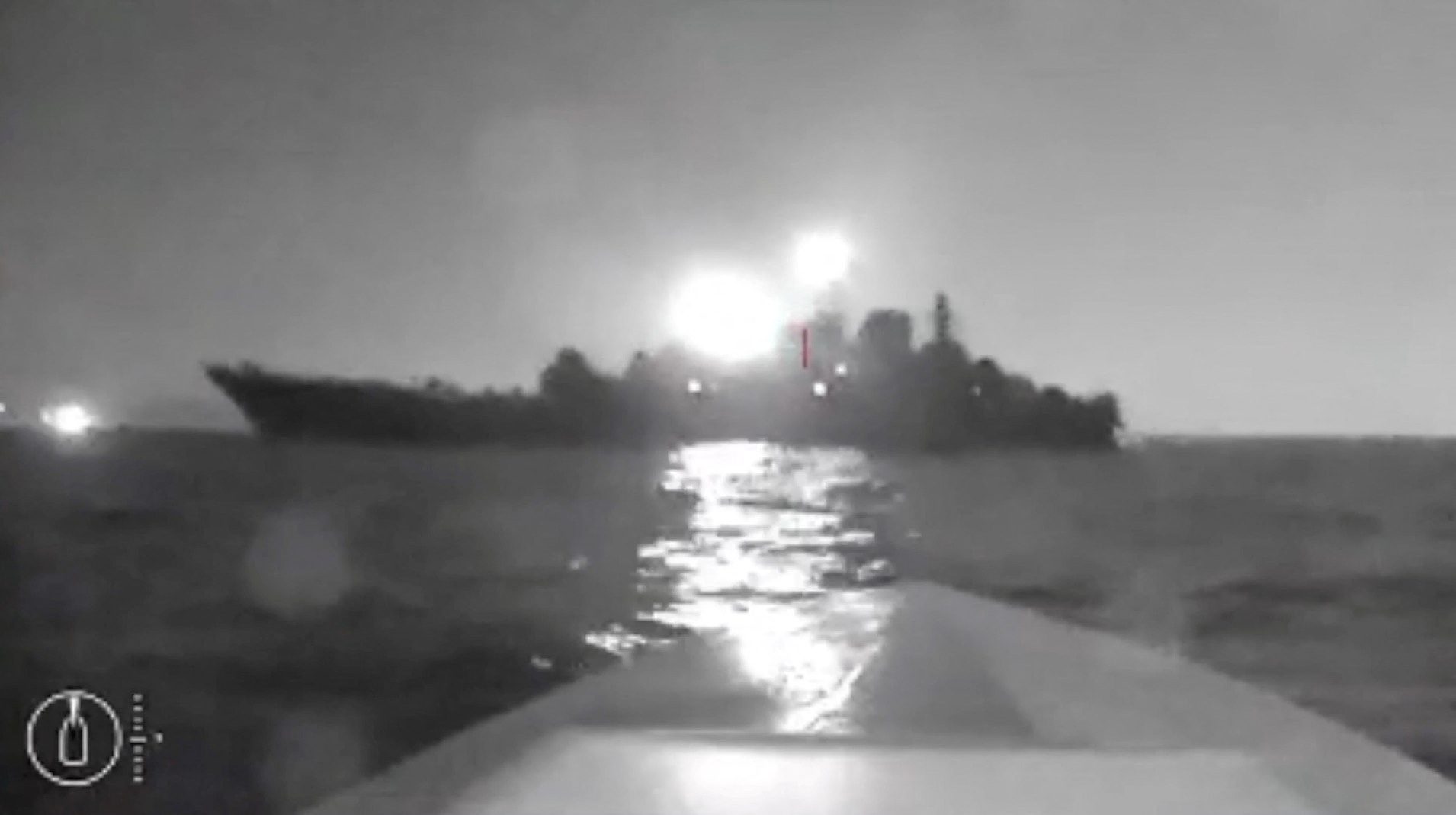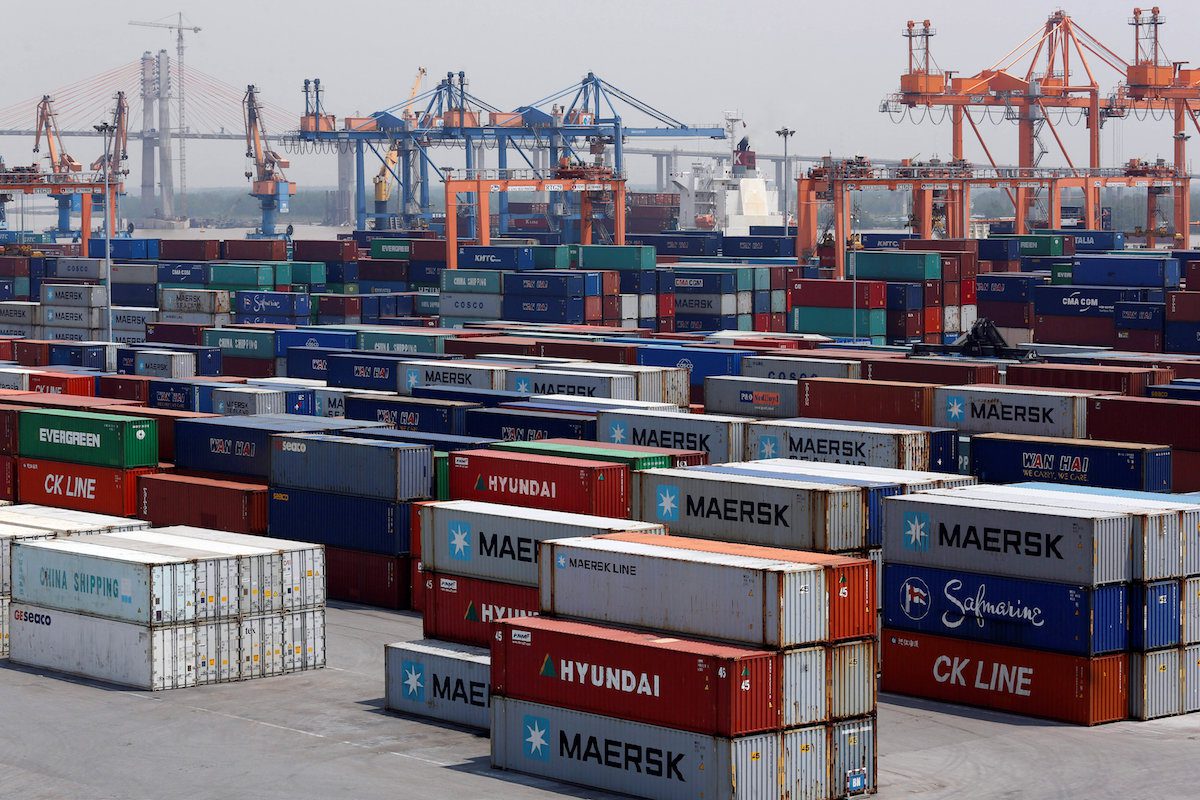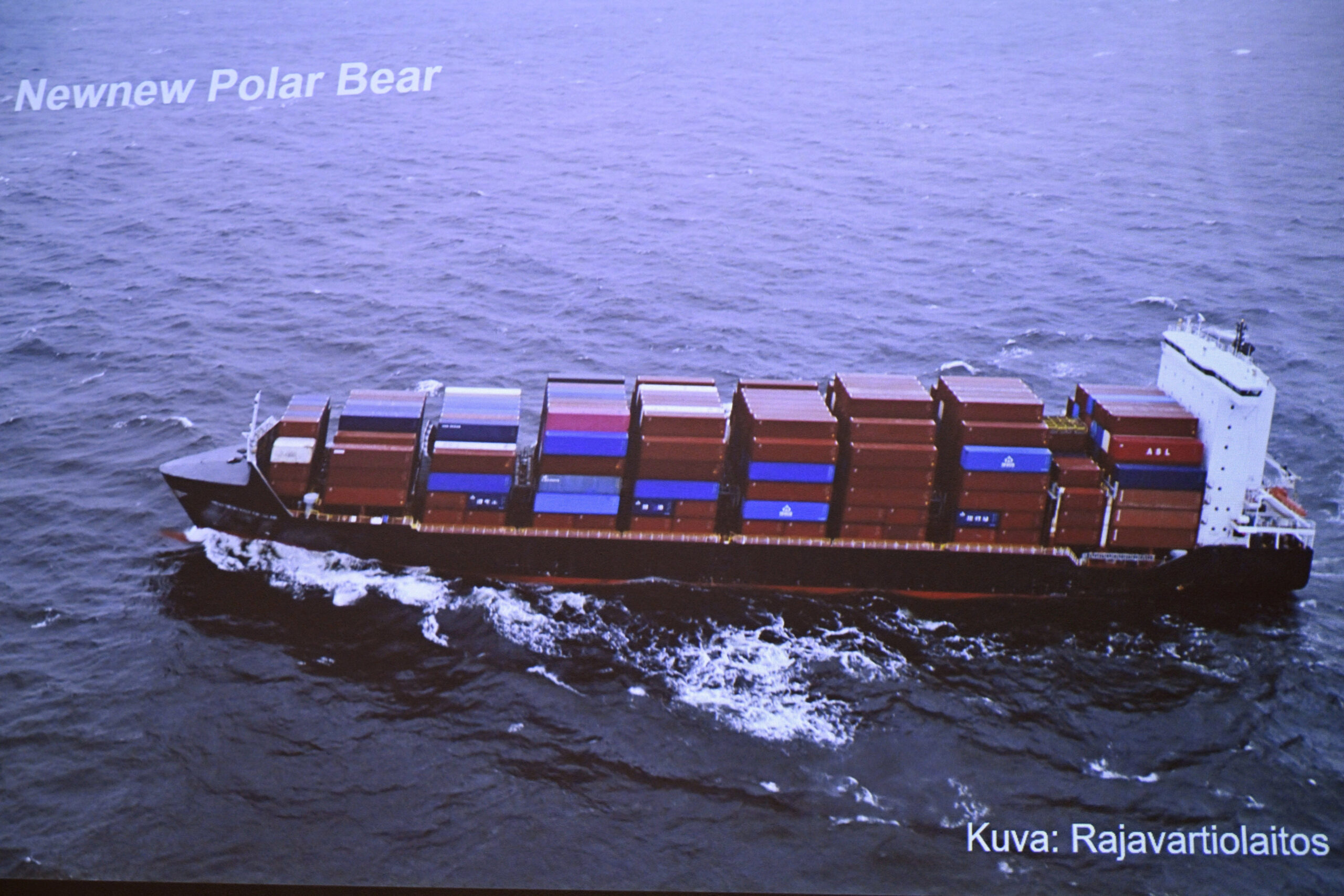(Bloomberg) —
The footprint of President Vladimir Putin’s war on Ukraine is growing fast after a weekend in which sea drones crippled a Russian naval vessel and an oil tanker.
For the first time, the attacks put at risk Russia’s commodity exports via the Black Sea, a route that accounts for most of the grain and 15% to 20% of the oil that Russia sells daily on global markets. Significantly higher insurance and shipping costs are likely to follow for Moscow, but there are risks to European and global markets, too.Play Video
The expansion comes as Ukraine’s counteroffensive advances more slowly than Kyiv officials planned, and as Saudi Arabia’s attempt to catalyze peace talks by hosting a multinational conference showed just how hard it is likely to be to end the bloodshed on terms both sides can accept.
Ukraine’s defense ministry confirmed it struck key bridges on one of two roads that connect Crimea to the Ukrainian mainland on Sunday, using Storm Shadow cruise missiles. That forced Russia to reroute supplies to its forces in the south via the longer and more exposed road to the west, according to the Institute for the Study of War, in Washington.
“We’re in an escalation phase now and the situation is unpredictable,” said Alexander Gabuev, who heads the Russia Eurasia Center of the Carnegie Endowment for International Peace, a Washington think tank.
“Since the start of its counter-offensive, Ukraine has been trying to deliver a message to the Russian elites and population that the war can strike into their territory,” Gabuev said. Now it “is trying to target Russian critical infrastructure, including sea routes in the Black Sea that are vital for Russian exports.”
Although the extent of this escalation and its consequences are for now unclear, they may become significant and hit non-Russian economic interests as hard as Moscow’s, if not Ukraine’s. Wheat futures in Chicago climbed more than 3% on Monday before paring gains, while crude oil prices in New York were little changed.
“Freight rates will be ballooning next week as the risks of carrying anything across the Black Sea proliferate,” said Viktor Katona, head crude analyst at market intelligence firm Kpler Ltd. The cost of shipping Russian crude from Novorossiysk to the west coast of India could rise by as much as 50%, he said.
Oil Exports
Russia exports around 500,000-550,000 barrels a day of crude and 450,000 barrels of refined products, mostly fuel and diesel, from Novorossiysk. The port also loads about 250,000 barrels a day of crude from Kazakhstan that gets delivered to the port via pipelines and from there is shipped to Romania for refining, Kpler data show.
Nearby the port, the Caspian Pipeline Consortium, or CPC, alone loads tankers with about 1.3 million barrels of crude per day and is the main route for exporting oil from Kazakhstan to Europe.
“Some 2.5 million barrels a day of crude and products flows are endangered by the flareup,” Katona said, adding that a potential halt of the CPC would do much more damage to Western interests.
Russia is also the world’s top wheat exporter, and the bulk of its grain is delivered from Novorossiysk and the Kavkaz anchorage in the Kerch Strait. The country is in the midst of a second bumper harvest, making this a crucial time for getting grain to global markets.
Kyiv’s decision to take the war to Russia in the Black Sea follows Putin’s July 17 withdrawal from a United Nations-brokered grain deal and a concerted missile campaign against Ukrainian ports since. Ukraine’s grain exports have been severely reduced as a result, while Russia’s were unaffected.
The Kremlin’s goals are clear: to make shipping grain from Ukraine uninsurable and destroy the nation’s port infrastructure, both on the Black Sea and along the alternate route that the government in Kyiv has been developing on the Danube River.
‘Military Threat’
“Two can play that game,” Ukraine’s defense ministry said in a Saturday post on X, formerly known as Twitter.
“It’s time to say to the russian killers, “It’s enough.” There are no more safe waters or peaceful harbors for you in the Black and Azov Seas,” the ministry said in another post the same day.
Since 1991, russia has systematically used the territorial waters of Ukraine to organize armed aggressions: against the Georgian people and against the people of Syria. Today, they terrorize peaceful Ukrainian cities and destroy grain condemning hundreds of millions to…— Defense of Ukraine (@DefenceU) August 5, 2023
Ukraine’s State Hydrographic Service warned on Friday that the Russian Black Sea ports of Taman, Anapa, Novorossiysk, Gelendzhik, Tuapse and Sochi should now be considered subject to “military threat.”
The statement came just hours after a naval drone struck the Olenegorsky Gornyak, a landing ship. The vessel was stationed outside Novorossiysk and briefly halted marine traffic at the port for the first time since the war started almost 18 months ago.
On Saturday, another sea drone hit the Sig, a Russian-flagged oil tanker that supplies fuel to Moscow’s forces in Syria. Ukraine said the Sig had been en route to deliver fuel to Russian forces in Crimea’s Kerch strait. Putin annexed the peninsula in 2014.
Scrambled Aircraft
Both attacks represent a further expansion of the war’s scope, a development that began earlier and is likely to concern Kyiv’s allies. Russia’s missile strikes on new grain facilities at the Danube ports of Reni and Izmail took the war to within just a few meters of Ukraine’s border with Romania, a North Atlantic Treaty Organization member.
Fellow NATO member Poland also had to scramble aircraft recently, in response to a breach of its airspace by low-flying helicopter gunships from neighboring Belarus, now home to Russia’s Wagner group of mercenaries.
Kyiv, for its part, has conducted a series of drone attacks on Moscow since May, and more recently hit the Russian port town of Taganrog, on the Azov Sea, with a missile.
At the same time, both sides appear to have taken care to ensure no catastrophic line was crossed. Russia used slower and less powerful Shahed loitering munitions to attack Izmail, on the Danube. That reduced the risk of a major accidental strike on NATO territory, relative to using cruise or ballistic missiles.
Similarly, Ukraine’s sea drone targeted the engine room at the rear of the Sig, making a major oil spill from its tanks, which sit further forward, less likely.
Further escalation is likely nonetheless. On Sunday morning, Ukraine was hit by an unusually large barrage of missiles against Kyiv and other cities across Ukraine.
© 2023 Bloomberg L.P.

 Join The Club
Join The Club











